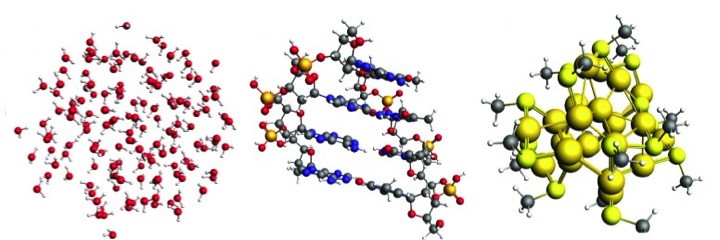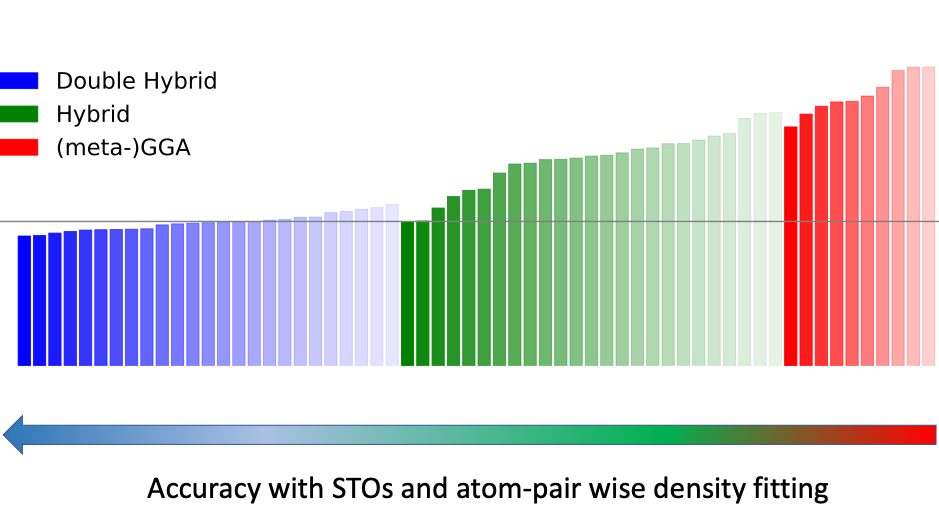Double hybrids: recommendations for accurate thermochemistry & kinetics
Double hybrids especially excel in thermochemistry, kinetics, transition metal chemistry, and the description of strained organic systems. They often provide improvements over the best performing, dispersion-corrected hybrid functionals.
With the recent efficient MP2 implementation in ADF (SOS-AO-PARI-MP2 [1]), it is now possible to run double hybrid calculations on very large systems.

Many double hybrids are now available in ADF. The implementation is especially efficient for the very accurate class of DOD-double-hybrid functionals, providing double hybrid energies at the computational cost of hybrids.
To provide recommendations to the user, the accuracy of 60 density functional approximations has been assessed on a large variety of chemical applications [2].

General recommendations for double hybrids in ADF
- Basis set: all-electron TZ2P (QZ4P may not be numerically stable)
- Accuracy: Normal (good or very good is usually not necessary)
- Dispersion corrections: D4 or D3(BJ)
- Use scalar ZORA, especially for transition metals and heavy elements
- Use a DOD functional if you can (much faster!)
Specific recommendations per application type
1) reaction energies: B2T-PLYP-D3(BJ), or the faster revDOD-BLYP-D3(BJ).
2) activation energies: revDOD-PBEP86-D3(BJ); alternatives: more computationally demanding B2K-PLYP for transition metal complexes, metahybrid M08-HX for organic systems.
3) difficult isomerizations: revDOD-PBE-D4 or revDOD-PBEP86-D4. Fullerenes should not be calculated with double hybrids.
For some applications, double hybrids do not improve much over hybrids or GGAs with dispersion corrections.
4) simple isomerizations: B97-D4:
XC
libxc B97
Dispersion Grimme4 s6=1.0000 s8=0.87854260 a1=0.29319126 a2=4.51647719
End
5) non-covalently bound complexes: GGA+D, e.g. BLYP-D3(BJ). D4 is generally preferred over D3(BJ).
[1] Arno Förster, Mirko Franchini, Erik van Lenthe, Lucas Visscher, A Quadratic Pair Atomic Resolution of the Identity Based SOS-AO-MP2 Algorithm Using Slater Type Orbitals, J. Chem. Theory Comput. <16>, 875-891 (2020).
[2] Arno Förster, Lucas Visscher, Double Hybrid DFT Calculations with Slater Type Orbitals, J. Comput Chem. 2020; 1-25.
Key conceptsADF inorganic chemistry Reactivity